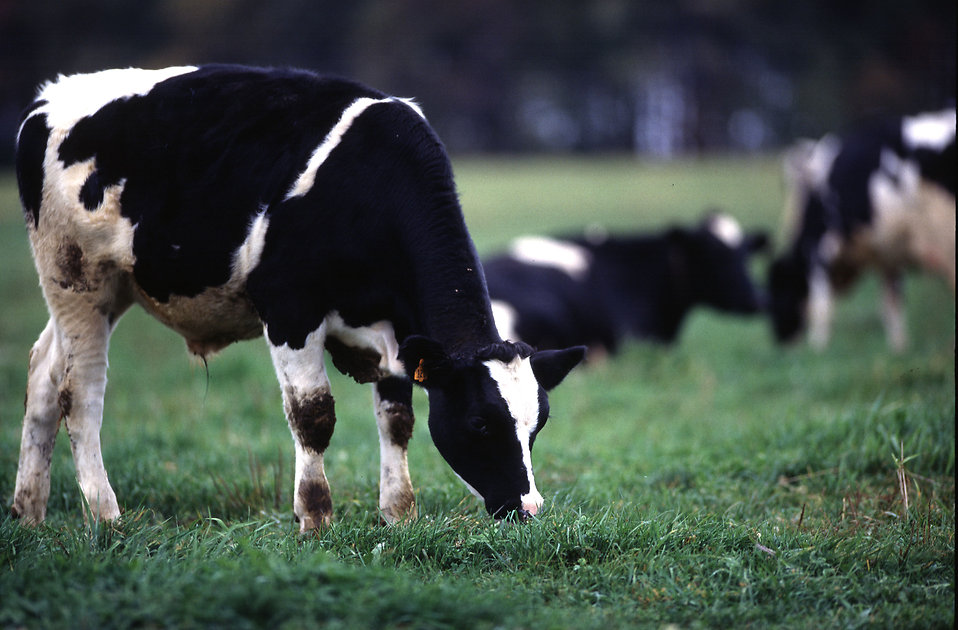Summer heat and drought have resulted in interruptions in supply of feed, slaughtering cows, and reduced milk yields. Apparently, there is a crisis awaiting the dairy sector of Europe, which is estimated at 12 billion euros. The clearest problems for livestock breeders can be seen in the case of Ireland, one of the main producers of milk in Europe. The famous green meadows burned and became brown this year because of the record heat. The diet of millions of Irish cows became scarce, and thus milk yields fell.
Incomes of producers of milk and farmers are rapidly declining. According to estimates of the Department of Agriculture and Food of Ireland, incomes of milk producers this year will be at least twice lower than in the past. This, of course, will result in a decrease in milk production and higher prices for it. In the fall, the Irish and the rest of Europe will feel financial consequences of the current situation because farmers across the continent experience similar problems.
One of the Irish farmers estimated that each cow brought him a loss of 10 euros a day this summer. In Denmark, which gives about 8% of milk in the EU, it was estimated that the hot summer this year caused a loss of $ 1 billion to livestock producers, according to the agricultural organization SEGEC. Within the next six months, it will lead to a sharp rise in milk prices.
The European Commission intends to support the dairy sector in Europe. Brussels is going to help farmers with purchase of fodder for the winter, the prices for which have already begun to increase dramatically. In addition, measures are being developed to accelerate payments and liberalize laws related to land use.
In Ireland, heavy snow at the beginning of the year soaked the ground so much that farmers had to turn to their strategic reserves of feed even before the drought started. As a result, many had to use the fodder, prepared for the winter. Those who did not have stocks and who could not buy food at high prices had no choice but to slaughter cows. Over the three summer months, the number of cows slaughtered in Ireland every week, according to the Ministry of Agriculture, increased by 16% compared to last year. The livestock number even more declined in Germany, where the number of slaughtered animals increased by 50% compared with 2017.
The heat waves adversely affected cows. On average, a cow gives 40 liters of milk per day, but the heat can reduce milk yield by half. To maintain high milk yield, cows have to be fed with additives, which is an additional cost.
And these are only short-term problems. Heat can also affect the fertility of cows. Experts do not rule out a decline in the birth rate, but it will be possible to assess the extent of this problem only after 9 months.
source: bloomberg.com
Incomes of producers of milk and farmers are rapidly declining. According to estimates of the Department of Agriculture and Food of Ireland, incomes of milk producers this year will be at least twice lower than in the past. This, of course, will result in a decrease in milk production and higher prices for it. In the fall, the Irish and the rest of Europe will feel financial consequences of the current situation because farmers across the continent experience similar problems.
One of the Irish farmers estimated that each cow brought him a loss of 10 euros a day this summer. In Denmark, which gives about 8% of milk in the EU, it was estimated that the hot summer this year caused a loss of $ 1 billion to livestock producers, according to the agricultural organization SEGEC. Within the next six months, it will lead to a sharp rise in milk prices.
The European Commission intends to support the dairy sector in Europe. Brussels is going to help farmers with purchase of fodder for the winter, the prices for which have already begun to increase dramatically. In addition, measures are being developed to accelerate payments and liberalize laws related to land use.
In Ireland, heavy snow at the beginning of the year soaked the ground so much that farmers had to turn to their strategic reserves of feed even before the drought started. As a result, many had to use the fodder, prepared for the winter. Those who did not have stocks and who could not buy food at high prices had no choice but to slaughter cows. Over the three summer months, the number of cows slaughtered in Ireland every week, according to the Ministry of Agriculture, increased by 16% compared to last year. The livestock number even more declined in Germany, where the number of slaughtered animals increased by 50% compared with 2017.
The heat waves adversely affected cows. On average, a cow gives 40 liters of milk per day, but the heat can reduce milk yield by half. To maintain high milk yield, cows have to be fed with additives, which is an additional cost.
And these are only short-term problems. Heat can also affect the fertility of cows. Experts do not rule out a decline in the birth rate, but it will be possible to assess the extent of this problem only after 9 months.
source: bloomberg.com



















